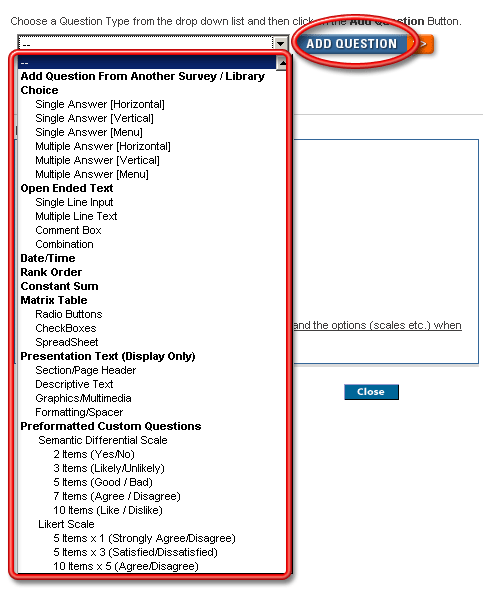You may also be interested in...
Yes
No
Television
Radio
Newspaper
Magazine
Word-of-mouth
Internet
Other: Please Specify _______________
__ Honda
__ Toyota
__ Mazda
__ Ford
Very pleasant
Somewhat pleasant
Neither pleasant nor unpleasant
Somewhat unpleasant
Very unpleasant
(7) Very Attractive
(6)
(5)
(4)
(3)
(2)
(1) Very Unattractive
(+5) Describes very well
(+4)
(+3)
(+2)
(+1)
Innovative
(-1)
(-2)
(-3)
(-4)
(-5) Poorly Describes
Seamless integration with other software __________
User friendliness of software __________
Ability to manipulate algorithms __________
Level of pre- and post-purchase service __________
Level of value for the price __________
Convenience of purchase/quick delivery __________
Total 100 points
To add a new question click on the Add New Quesiton link. This will open up the Question Wizard. On the First Page of the Quesiton Wizard you can select the Question Type from the Drop Down Menu.
1. Screenshot
